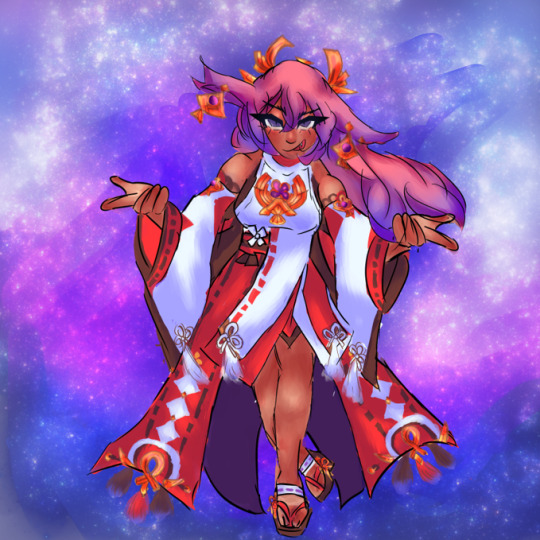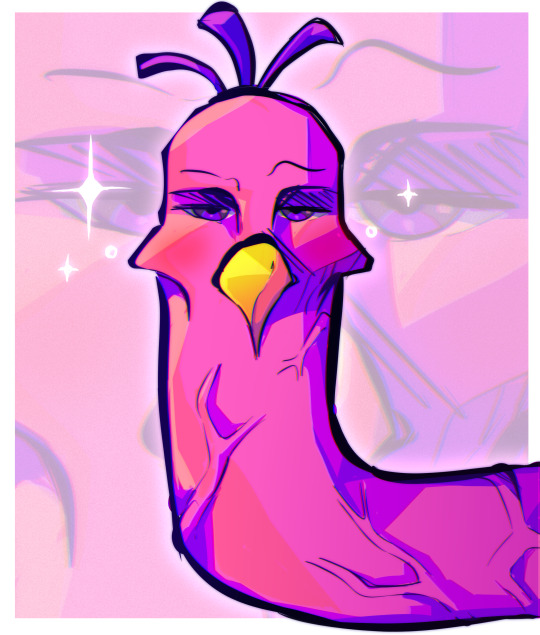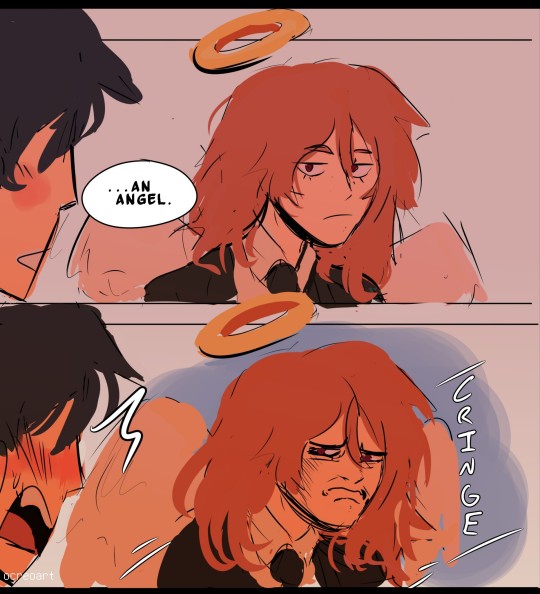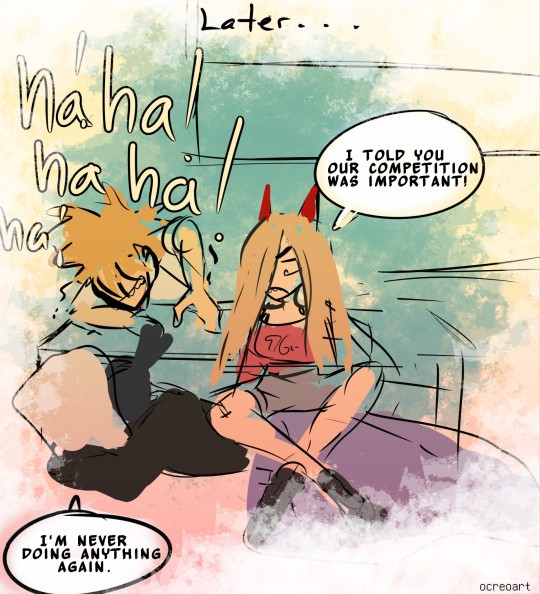Text

The Summer Hikaru Died Vol.3
Okay so I’m really proud of this book cover spread I made. Its (unofficial) but I was definitely inspired by the original :)
Im excited when I finally get the time to buy the 3rd book, I have the first two in Japanese I was to damn impatient in early 2023 lmao.
-phrog
#the summer hikaru died#hikaru ga shinda natsu#book cover#book art#idk how do I tag this??#god this is so niche#tshd#hgsn#hgsn fanart#tshd fanart
18 notes
·
View notes
Text
Webtoon Canvas is pay-to-win now, I guess.
DISCLAIMER: All of the series I show here is for the sake of comparing statistics and criticizing Webtoons' Super Likes system. I have nothing personal against these series or their creators and I do not want anyone to get the impression that I am encouraging any sort of action against these creators. The following rant is merely my own observations and opinions concerning Webtoons itself as a platform.
I found out today that Webtoon has implemented a Super Likes ranking board.

This does exactly what it sounds like - it ranks Canvas series based on how many Super Likes they have. Whether or not this ranking board is on a weekly rotation (like the Originals rankings) or just overall, I don't know, but something immediately felt off with this system and it took very little time at all to realize what was really going on here.
When you actually click on the series listed here, it'll tell you how many Super Likes they've accrued overall. The first thing that made me raise an eyebrow was the fact that the Super Likes listed in the ranking boards isn't the same as what's listed in the comics' landing pages, but I chalked that up to a simple delay on WT's end as I can assume the ranking board doesn't refresh at pace with whatever Super Likes are coming in.
But the real red flag was this:
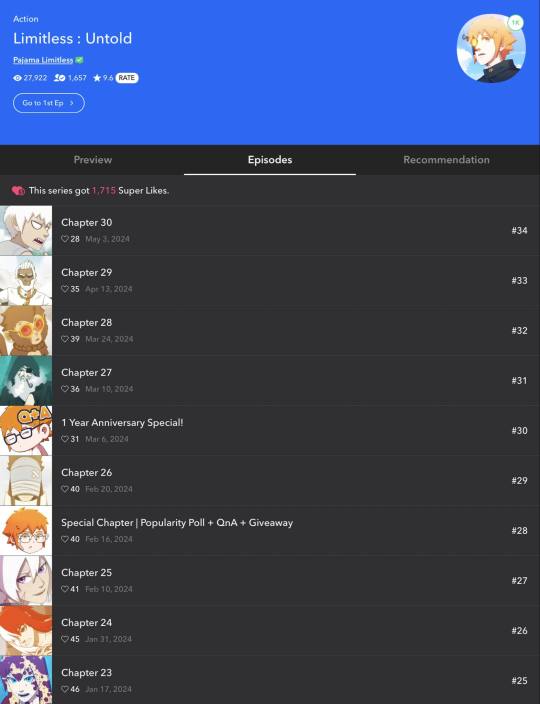
Limitless : Untold is a series with 1,657 followers and seems to get an average of 35-45 likes per episode.
But it somehow has 1,715 Super Likes?
Anyone who's run a Patreon, Ko-Fi, Ad Revenue, or any other sort of revenue-based system with their content will probably realize how that doesn't add up. The reality is that regardless of how many readers / followers you have, only a small fraction of them will actually spend money on your work or to support you. Not every person reading an Originals series is FastPassing. Not every person reading a webcomic is supporting the creator on Patreon. This ratio is even apparent outside of income-based statistics - for example, not every person who follows will read new updates each week and hit the like button (which is why you can have a comic with 1700 followers that only gets a few hundred views and a handful of likes per update). This ratio can be influenced by all sorts of different things, but one thing that doesn't typically happen is for the ratio to flip itself in this fashion.
To put it bluntly: how can a comic with a high of 45 likes in the past 3 months possibly accrue 1,715 Super Likes since it was launched just last week? You've probably already come to the conclusion on your own, but for those who haven't: there's very strong evidence to suggest that creators are buying their own Super Likes to get on this ranking board.
That's assuming the worst of this, though - after all, maybe some of these creators just have super supportive friends who are tossing them a ton of Super Likes? It costs $1 for 5 of them, in this example the amount of Super Likes comes out to approximately $343 (assuming my math is right lmao) which isn't massive amounts of money but it's, again, still really impressive for a comic with only 40 likes on average.
Bu Limitless : Untold isn't the only one in the rankings board that's like this. In fact, the top three spots are occupied by webtoons with the same tilted ratio.
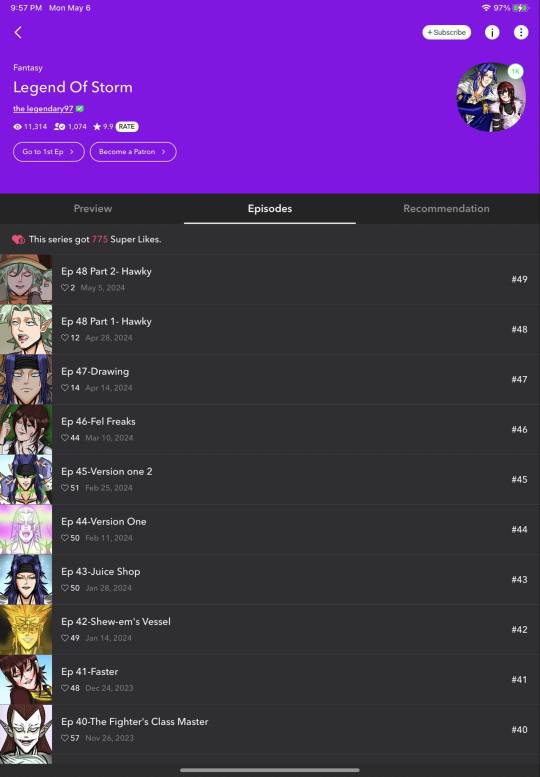
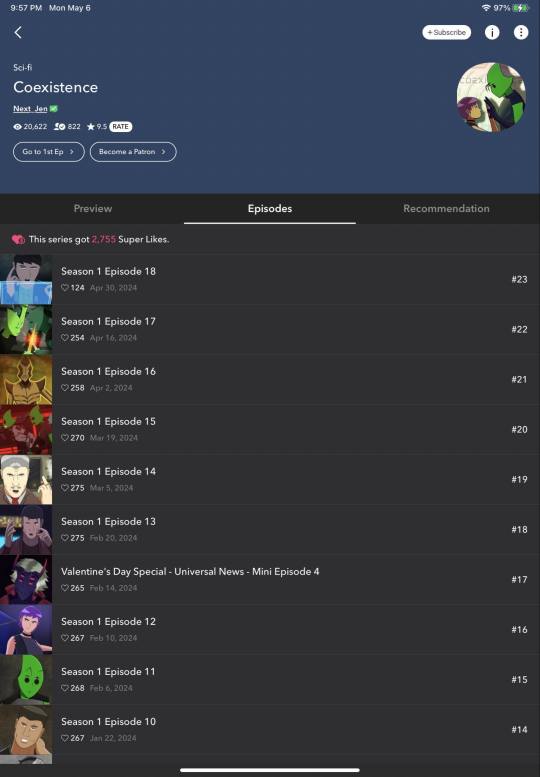
But then, suddenly, after those top three positions, the following webtoons Super Likes totals that make a LOT more sense and reflect the usual ratio more accurately:
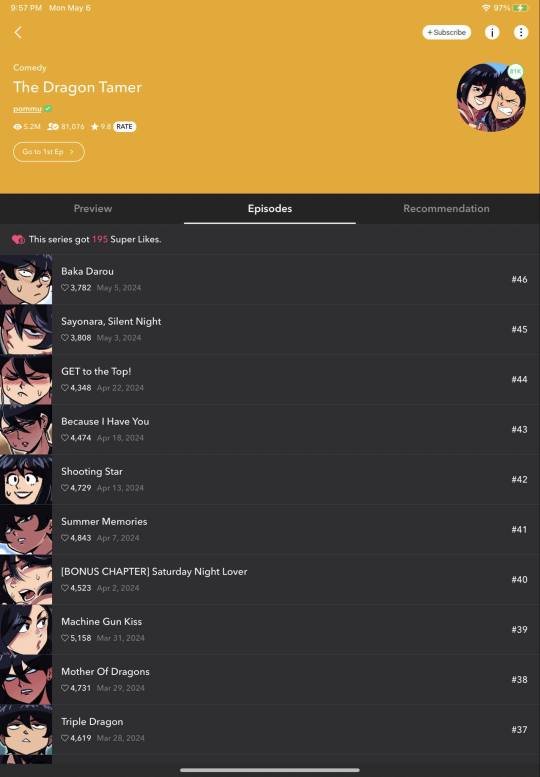
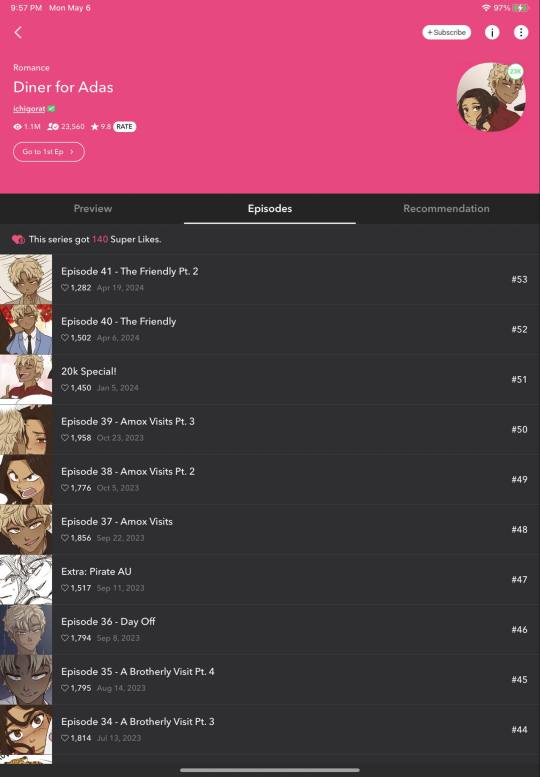

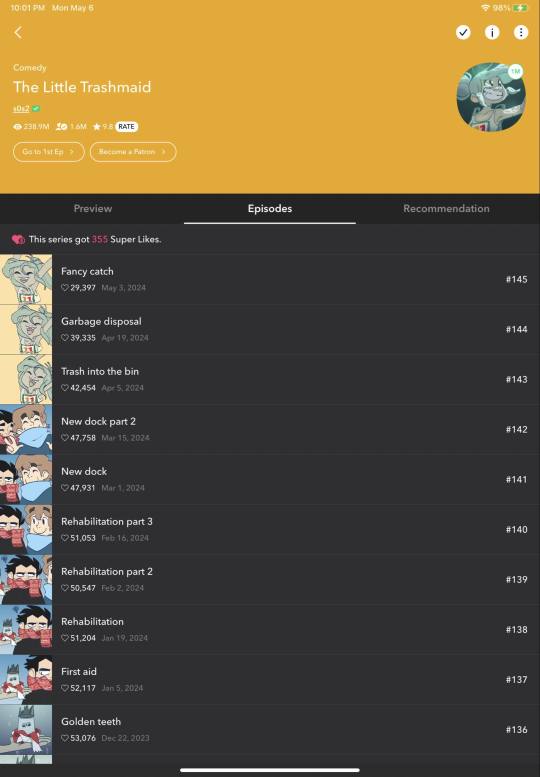

The Little Trashmaid, one of the most popular Canvas webtoons of all time and the first one to hit the 1 million subscriber mark in the Canvas section has only accrued 355 Super Likes so far... and you seriously want me to believe a comic like Limitless : Untold with only 0.08% of its readership is somehow genuinely earning five times the amount of Super Likes?
I want to make it clear yet again that I have nothing against the series that have managed to break the system in their own favor. None of this is meant to "slam" them or judge their work or anything of the sort, I'm simply comparing the numbers here and coming to a very reasonable conclusion as someone who's well aware of how ratios like this tend to work in webcomics and content creation. It's just not feasible for the top three comics in the Super Likes ranking boards to organically earn that many Super Likes relative to the sizes of their audiences, especially when compared to the bigger comics that are only pulling in a fraction of that amount. The ratios of Super Likes : actual likes for those bigger comics actually looks reasonable and expected, the ratios for the smaller comics that are sitting at the top are not.
If anything, Webtoons has created a broken system and these creators are simply using that system to their advantage. And I'm not necessarily going to fault them for that because I can get wanting to do whatever it takes to get eyes on your work.
But it does raise the question of what kind of system Webtoons has cultivated here - a system where creators are resorting to Super Liking their own episodes to bump themselves up in the leaderboards.
And before anyone asks me how I can be so sure that these creators are Super Liking their own works - I literally opted into the Super Likes system myself and proceeded to Super Like one of my own episodes.
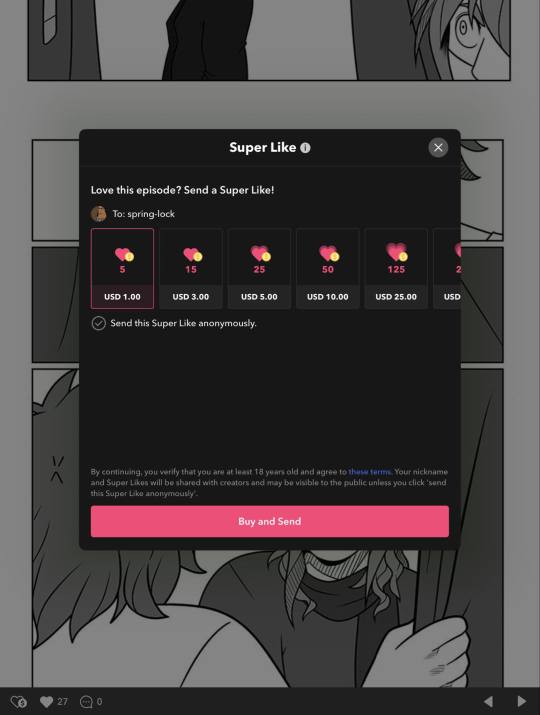
(this is like the one helpful thing with my work still being on WT even though I'm not updating there anymore, it lets me test shit like this LOL)
So yes, this is a thing that creators can do and it would certainly explain the massive discrepancy in the ratio of Super Likes : regular likes for these smaller series.
This is literally pay-to-win. And who do we have to blame for this? Webtoons, full stop. Not only for implementing a ranking board for an optional monetization service while still allowing creators to use that monetization system to support themselves as a way to climb up that ranking board, but for creating this gross psychological dependency on the platform as the "only way" to build an audience, to the point that people are now paying Webtoons out of their own pocket just to have their thumbnail visible in a ranking board and maybe get some extra views (and 49% of their money back if they hit that $100 threshold). And on top of all that, further putting on the pressure of competition and 'exclusivity' among many budding creators who are doing what they do for free and for fun. Why are creators now being forced to compete in a metric that's solely determined by how much expendable income their own audience has?
Sure, at least this means creators can get themselves into a ranking board by their own power unlike the other categories that are hand-picked by Webtoons and / or determined by daily stats, but at what cost? The literal financial hit of paying for advertising with extra steps, and the ethical dilemma of essentially paying for potential views with microtransactions. This is no better than paying bots on Instagram to follow your profile and inflate your worth to those who aren't following you. None of it is real, it will not legitimize your work to throw money at Webtoons just to have your thumbnail visible in a ranking board. These are microtransactions meant to benefit Webtoons, not you, the creator.
149 notes
·
View notes
Text
Beautiful spread!
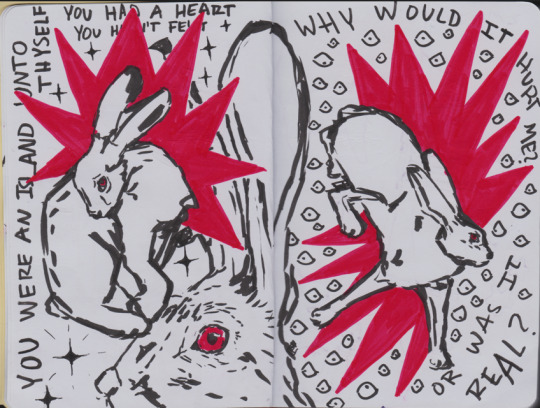
little hare-themed spread in my sketchbook that I drew while listening to one of my fav albums of all time, hawaii pt. ii <3 lyrics are from Isle Unto Thyself
🌠REBLOGS APPRECIATED!! and if you like my work and want to support me, you can donate to my ko-fi and I'll doodle something for you!! 🌠
16 notes
·
View notes
Text
Update: idk what Im doing, I created a sideblog but perhaps I need to create an new account entirely?? Yea um idk what to do crisis ig I will figure that out later, whatever it is a change is needed
please redirect ur attention to my new sideblooog: @phrooogiearts
It is my new account where I share my sketchbook pages!! So ye!!!
Um pls follow uhh yeee!!
-phrog
PS: I am gonna interact with this account like an old yoai couple I hope ur glad
1 note
·
View note
Text
How Not To Starve As A Starving Artist 1: Cost, Pricing & Profit
Some of the most important things to learn in order to be successful in the Artist’s Alley are proper pricing of your work and how to allocate and control costs for producing your items. It’s necessary to set prices at a level where items will both sell and turn a reasonable profit. (If you think artists making profit on their work is somehow wrong or excessive –there’s the door. These posts are not for you.)
1. How much does it cost you?
Divide the total cost of production by the amount you produce.
You arrive at the total cost of production by adding the cost of making each unit, supplies used to make it, and the cost of the labor to produce it. Divide that cost by the number of units you intend to make.
The cost of making each unit includes things like production supplies, labor, prepress and printing. The easiest costs to calculate are production supplies. Pricing supplies like paint can be tricky-what I normally do is keep track of how many hours of use it takes to use up a supply, and divide the purchase price of the supply by that. For any other supplies, divide the number of pieces (such as paper, canvas, framing) by the purchase price of the whole. Note: Whenever your cost per unit for a given supply is less than one cent, count your cost as a penny.
Price of Supplies/Quantity Purchased= Material Cost per unit
Add up the unit cost of each of the supplies used for the total supply cost.
It sounds fairly simple, but it’s easy to forget to pay yourself properly for your time as well as the material cost of the item. You wouldn’t work for free at McDonald’s, you shouldn’t work for free as an artist. This is especially crucial if you make craft items, where you cannot make multiple copies without additional effort. Keep track of the time it takes to produce a completed work and set yourself a reasonable hourly or piece rate. For example, if a painting takes ten hours to complete, and you’ve decided to pay yourself $10 an hour, the cost of labor for that painting is $100. You will need to charge more than that if you plan to sell the painting in order to make a profit on your time. Just try to remember to keep your labor costs reasonable lest you price yourself out of your market.
Hourly Rate x Hours to Make Base or Single Unit = Labor
The total cost to make an original item you plan to sell would then be the labor plus materials. Let’s say I am going to make prints of that painting I mentioned. The high-quality giclee printer I use for prints costs $2.85 per 8.5 x 11 print. The mat, backing and clear bag I use to package the print costs $1.50. The cost to reproduce the painting is $4.35 per print.
We’ve already determined that the cost of labor is $100, and I’ve determined that it cost me about $10 in paint and paper to paint it. I will divide those numbers by 100. That means that the cost of labor is $1 and supplies for each print is $0.10. Keep in mind that these are one time costs that will be paid for once your first run is sold out if you are doing a publication, producing a print or creating something that can be reproduced cheaply once it’s been created.
Because we do not pay for prepress, I do not incur any costs there. The base cost of the prints is thus $5.45, even though I am only paying $4.35 to get the prints produced. The upfront monetary investment I will need to make for 100 prints is $435-to repay myself for time and supplies I will need to make at least $545, meaning I need to make even more than that to turn a profit. This is important to keep in mind to avoid shortchanging yourself by underpricing.
Cost of Supplies = $0.10 per piece
Cost of labor = $1.00 per piece
Cost of reproduction (includes prepress, materials, packaging, etc.) = $4.35 per piece
Cost per unit = $4.35 + $1.10 = $5.45
Total cost = $5.45 x 100 = $545
2. How much do I mark up the price?
This varies by the cost of the item, intended market, and common retail prices for the type of item. The bare minimum you should mark prices up is 1.5 x the cost of the item–and only do that for low-cost/time investment promotional items. 2.5 to 3 x cost is more common and gets you a more fair price.
Keep in mind the prospective audience and what they expect. If you are selling fanart or quick character/portrait commissions, the audience is less likely to pay higher prices unless your work is of exceptional quality. The customer is likely to be more interested in collecting pictures of their favorite character or themselves and will not pay a premium for niceties such as matting or high quality printing. They will also compare prices and will probably seek the best price possible for the quality of work.
On the other hand, collectors and art enthusiasts prefer to buy matted work and may avoid lower cost items that they perceive as “cheap” and without lasting value. They expect archival quality materials. They are unlikely to do much price comparison-they know what they want and expect to pay higher prices for it.
I am not making a value judgment on which is better. Both have their place. I will state from experience that the two audiences rarely cross over-most artists attract one type or another, and it’s rare that the audience that buys one type of art will go for the other unless they form an emotional attachment to a particular piece. It is a good idea to have items that appeal to both on your table, but save your best efforts and highest investment for your primary audience. Therefore, it’s important evaluate your work objectively before you price it. A good tip is to compare it to work of similar quality and see what that work sells for.
In this example, I know from experience and research into art buying trends that people will pay a higher price for quality matted work, and that my work appeals to those buying art for art’s sake. At the conventions I go to there are less collector types, so I can’t expect to make a high volume of sales. I do have leeway to price higher than someone doing fanart. I will invest in matting my prints and mark up the cost 300%(3x)–that gives me a cost of $16.35.
That isn’t a price I would want to charge at a convention, however. The change is a pain to deal with in the environment of a convention, and makes the sale take longer. My least problematic price options are to charge either $15 or $20. I am going to charge $20 to start.
Price = $20
Why charge the higher price? Won’t you sell more if you charge less?
I’ve noticed that over the past decade, my print sales at cons have become very consistent, despite changes in price, print quality, etc. The images that sell the most are the highest quality work, exhibiting the most technical skill. I do not sell fanart, so I know that people are not buying the work solely because it contains a favorite character. My audience are collectors who are interested in that specific piece, and they are willing to pay any fair price I charge. $5 of extra cost is unlikely to influence their purchasing decisions in most cases. $20 is more than fair for a quality art print at a convention, especially when properly packaged with a mat and clear bag to protect the work. The higher price gives me a more comfortable profit margin and gives me room to run sales and give discounts without hurting myself. I sell a lower volume of prints by choosing not to sell fanart; by pricing higher, I can maintain my profit at a comfortable level where I can afford to continue selling art at conventions. I will show you how important that is in a moment.
3. What is my real profit?
In theory the following is my total profit:
100 prints x $20 = $2000 total sales
$2000 in sales – $545 in costs = $1455 profit
That seems like a lot of money, doesn’t it? It would be really great to get all that at once. Except that you don’t, most of the time. This is the part where a lot of people screw themselves, aided and abetted by people who think that greedy artists make lots of money when they should give their work away for free. Pay close attention to this next part-this is where you find out why many artists work other jobs.
5-10 prints per con x $10-$20 per print = $100-200 sales
$100-200 sales – $27.25-54-50 in costs = $72.75-145.50 profit
For example, I can expect to sell somewhere between 5-10 copies of a print per convention. So my hypothetical print can net me a profit of $72.75-$145.50 at a con. Sounds great, right? Problem–conventions are rarely free. Average cost is about $50 per table. Now add in food, travel and accommodations. My personal cost for attending conventions, where I share rooms & travel costs and largely bring my own food, is about $300 each con.
Wow, there goes my profit. Woo-hoo, the decadent life of the bohemian. I covered the price of a pizza party one night of the convention.
In reality, I usually have 3-4 prints that sell well at a con, or we sell comics, etc. Thus, let’s assume that I had 4 identically priced prints that sold 7 copies, for a total of 28 sold, and I sold none at a discount. Profit on that is $407.40.
28 prints x $20 per print = $560
Base cost of prints= $5.45 x 28 = $152.60
$560-152.60 = $407.40 profit
$407.40 profit on prints – $300 convention costs = $107.40 actual profit
If I charge $15 a print, the math looks like this:
28 prints x $15 per print = $420
Base cost of prints= $5.45 x 28 = $152.60
$420-152.60 = $267.40 profit
$267.40 profit on prints – $300 convention costs = –$32.60 loss
If I had charged $15 a print, I would have lost $32.60 on the convention. Even if the convention had been free, I would only have brought home $267.40 as opposed to $407.40. That $5 difference is likely inconsequential to the customer, but makes a big difference to me and my ability to carry on working as an artist. I may be able to charge more in the future without hurting sales, and that would get me a better return–that takes experimentation and record keeping over time.
In other words, not enough profit to quit the day job. Working full time as an artist is a lot of hard work and takes careful business planning. Even working part time involves a lot of care in order to avoid harming yourself. It’s worth it to put in the time to figure this stuff out, even though it takes time away from the fun part of making the art.
For example-that $10 an hour wage you’re paying yourself only works if someone else is taking care of your living costs. In real life, if you make $10 an hour and are supporting yourself, you aren’t able to buy art supplies. When I do freelance design to supplement my day job, I charge a minimum of $50 an hour, and that’s to non-profits and friends. That’s the real cost of my time-including things like my investment in computer equipment, software, health insurance, retirement savings, etc-in relation to how many hours I can reasonably expect to work in a year. However, that high of a labor cost for an independent, self publishing artist could price you out of the market unless you can make up that one time labor cost in sales volume. So a proper balance against what you are actually producing is important. My decision is to work a full time job that supports my financial needs, allowing me to produce art in my market at a sustainable cost.
Also, note that none of this includes taxes, which become very important if you have any success as an artist. Get a good accountant if you are serious about working professionally as an artist. Even on the hobbyist level you need to be careful and get advice from qualified people.
4. That’s a lot to keep track of–where do I start?
Good record keeping is number one. Make yourself a logbook, spreadsheet or some other way of tracking your costs and time expenditure. Make sure to keep records of sales at cons, and note down your impressions of trends and commonalities in your customers. Note your convention costs and how much you invest in items like computer & printing equipment, software and training, as well as displays and art supplies.
Having that information readily available makes it much easier to make good pricing decisions. It also lets you know where to spend your money when it comes to things like training-my graphic arts knowledge saves us a great deal of money and time in preparing our work for printing, and ensures that we have more control over the finished product. That knowledge also lets me determine what hardware and software meets our needs and is the best deal.
Don’t be afraid to make investments that will cut production costs or increase sales, even if it means that you technically lose money in your art business that year. Plan those investments for years when you are more financially secure and can afford it without going into debt. Remember-you have to pay interest on debt, and you should include that in your calculations.
This year, we are bound to finish in the red- we made an investment in printing The Apprentice Book 1, which will take a while to earn out the printing costs. I also sunk a significant amount of money into things like a new banner and some display upgrades-we hadn’t updated in the last several years, and we need to keep our table interesting to attract customers. With a small investment in giveaway items added to that and the cost of a few equipment upgrades & supplies, we simply aren’t going to show a profit this year. Since we have day jobs and are on top of our personal debt, this isn’t a problem. These costs will get spread over a long period of time, and we did experience an uptick in sales that could be attributed to the better display and new items.
However, don’t upgrade just because something new came out-wait until you have a solid reason why this will increase your productivity or decrease costs in a tangible way. For example, we are preparing to replace our 10-year old scanner which still functions properly; the manufacturer no longer supports it and larger format scanners are less expensive now, justifying the cost with a significant timesaver. We chose not to spend the money until we would be getting a notable improvement in functionality.
Make sure you aren’t selling yourself short. If you haven’t been keeping these records, start now. You’ll appreciate it later, when you’re not trying to figure out how you can afford to go to print and still keep the lights on.
P.S. You may have noticed that earlier in this article, I mentioned that I expect a lower volume of art collectors at the cons I frequent, which begs the question of why I attend those conventions. The reason is that while there is a lower overall volume of art collectors there, they are more likely to purchase my art specifically and I have less competition. I will elaborate more on this in my next post on this topic.
How Not To Starve As A Starving Artist 1: Cost, Pricing & Profit was originally published on Kumate Works
120 notes
·
View notes
Text
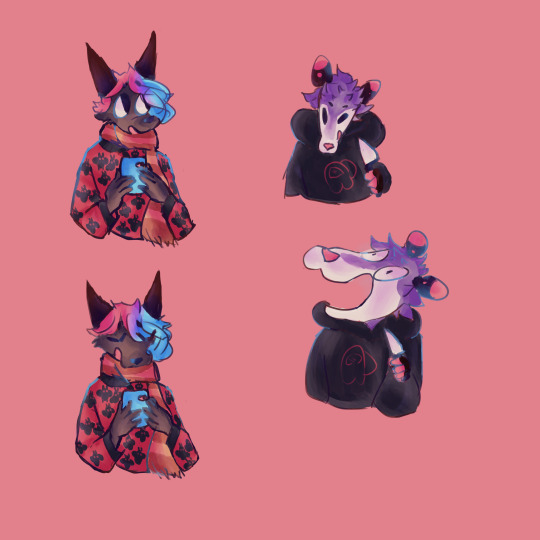
Killer amongus AHHHHHH
Also note to self maybe I should put the quality of my works down a bit because the possiblity of someone legit stealing my art is an oof
0 notes
Photo
I can see this happening but why

Asa voice No Denji your warrior cat cannot be named Chainsawstar
5K notes
·
View notes
Text
This is my archive now I have decieded to save my work or parts of the process here
0 notes
Text
114K notes
·
View notes
Text

time to learn about friendship from a qualified teacher!
3K notes
·
View notes
Text

Red guy as Wednesday and duck as enid
#wenclair#wensday addams#dhmis#dhmis duck#fluffybird#dhmis red guy#dhmis fanart#wenclair fanart#enid is a lesbian#wednesday is soft for enid#enid fanart#enid is queer
115 notes
·
View notes
